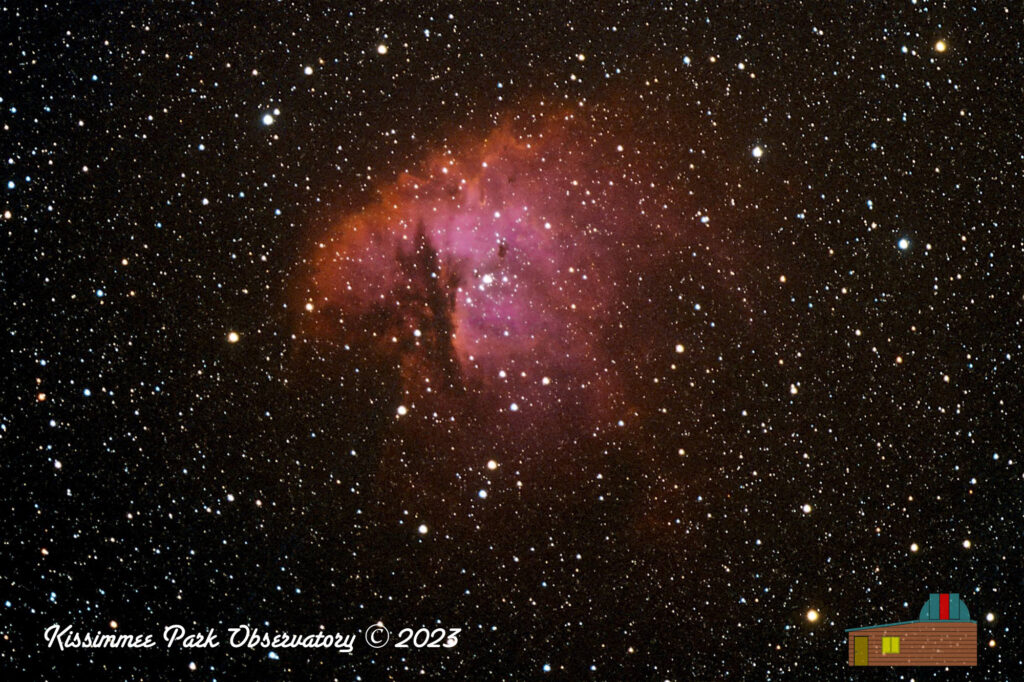NGC 281, which is also known as the Pac-Man Nebula, is located in the constellation Cassiopeia and is easily visible through binoculars and small telescopes. This nebula has been known since the mid-1800s, and it has since become one of the most recognizable objects in the night sky.
From a distance, NGC 281 appears as a bright irregularly shaped patch of light. To the unaided eye, it looks like a ghostly smudge in the sky that’s just slightly brighter than its surroundings. However, when viewed through a telescope or binoculars, the nebula takes on an entirely different form. It’s still a relatively faint object, but it appears as a large, bright, round patch of light within a complex network of filaments. This is caused by gases, dust, and ionized particles that are lit up by the young stars near the center.
The famous 80’s arcade Pac-Man shape is the result of two gas clouds in the nebula. The more prominent one is the dark and often oval-shaped cloud in the north, which looks like Pac-Man’s face. The other smaller cloud lies just a bit to the southwest and is often referred to as Pac-Man’s trailing arm. Both clouds are illuminated by a bright, young star that’s located in a nearby cavity, which gives them their distinctive shapes.
One of the most interesting features of this spectacular nebula is the presence of an open star cluster within the gas clouds, known as IC 1590.
Whether you’re a casual star-gazer or a serious student of the night sky, NGC 281 is sure to impress.
This is another multi-year image. Data for this image was started with last year’s image data and was combined with data collected in recent imaging run this year – a truly unique new ability using the telescope control technology that is now available.
Click on the image for a larger version that you can explore.
Image Info
- Imaged from the KPO field in Saint Cloud, Florida in October 2021 and January 2023.
- Camera : ZWO ASI1600MM Pro
- Lens: Canon 100-400 f/5.6L lens, set to 387mm
- Mount: iOptron SmartEQ Pro
- Hydrogen Alpha: 32 subframes of 300s = 160 min integration, assigned to Red
- Oxygen III: 26 subframes of 300s = 130 min integration, assigned to Green
- Sulphur II: 29 subframes of 300s = 145 min integration, assigned to Blue
- Total integration time: 435 min = 7.25 hours.
- Captured via ASIAir Pro automation
- Optical tracking via ASIAir automation, currently using ST4 mount control via the ASI120MM-S guide camera
- Separate channels stacked and HOS integrated in Astro Pixel Processor
- Final processing in Aperture

